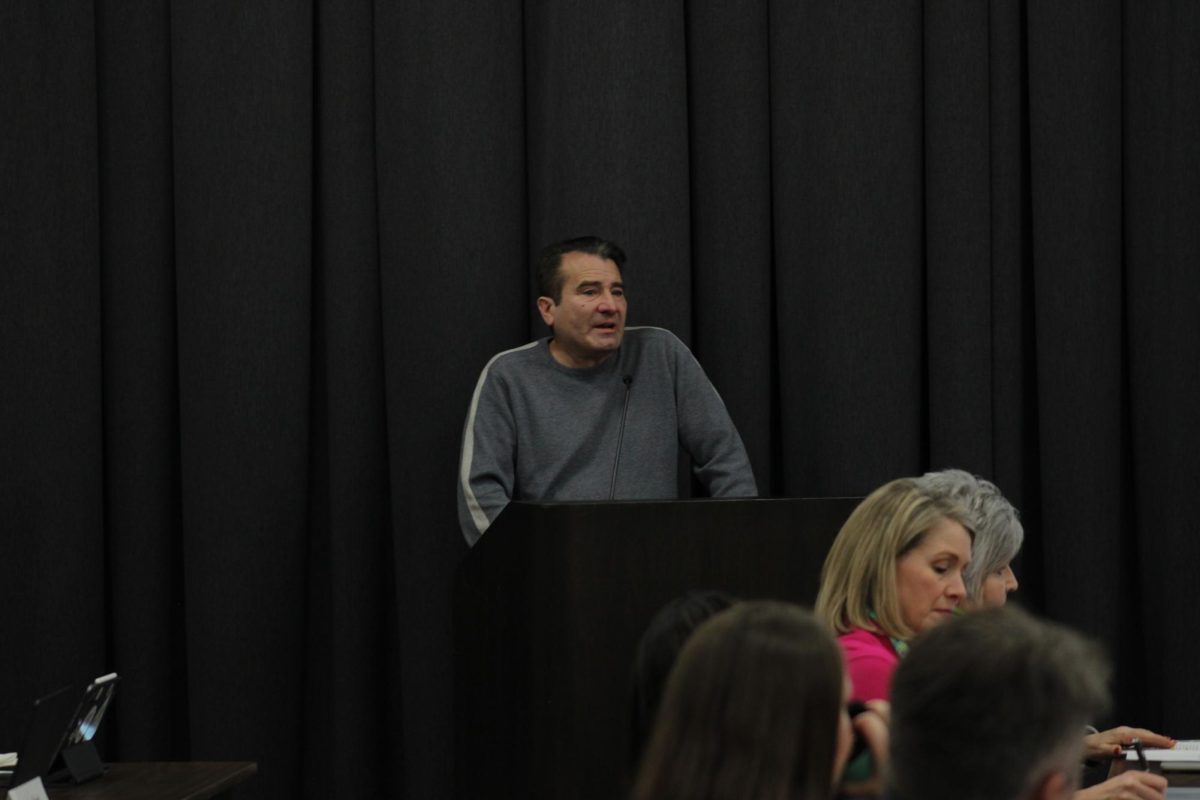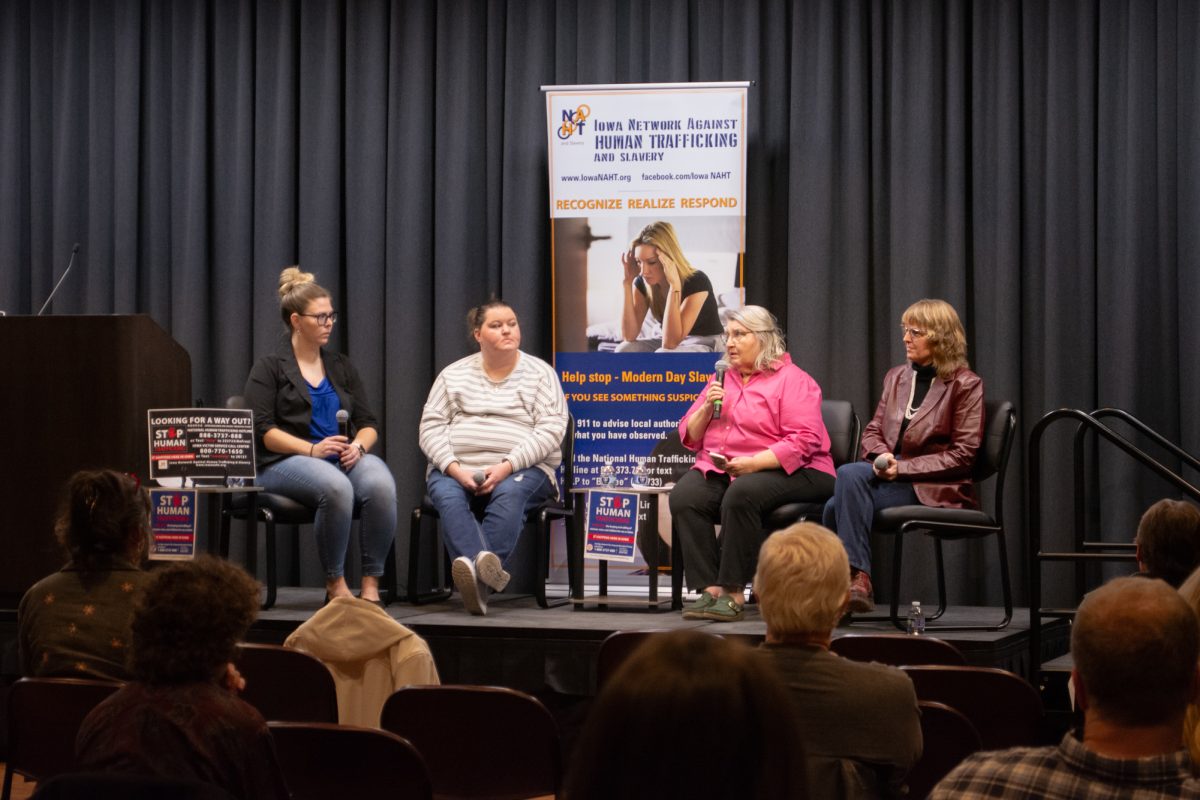‘Boxy’ images shown on campus
December 4, 1997
In a demonstration to show the effects of mass media on young women’s psyches, an eight-person group from English 345 created a “body box.”
In the first demonstration, the box, which is a large stove box, was “worn” by a female member of the group, who also wore tape over her mouth.
The box has several props, including high heels and shaving razors hanging from it, as well as numerous magazine cutouts of “perfect,” size four female torsos pasted along the sides.
The box also has derogatory slang for women including “bitch” and “whore” scrawled along the sides.
The group displayed their project for the second time on Wednesday from noon to 1 p.m.
As members of the group stood inside the box, other members of the group videotaped reactions and opinions from passing students, as well as handed out statistics about anorexia and bulimia, two diseases that have ravaged young women.
The idea for the box was conceived by group member Jeanne Higgs, sophomore in English and Spanish.
“I came up with the idea in the fall of ’96,” Higgs said. “It’s to make people think about women and the images that we see of women in the media, and a statement about the objectification of women.”
Higgs said the protrayal of women in the media makes women seem more like “dolls” than people.
“Women’s bodies are so much more prevalent in the media than women’s voices,” Higgs said.
“I think that a lot of the objectification of women, in many ways, helps make women feel unsure about their bodies, and unsure about themselves,” she said.
Higgs said she had considered doing this project for a while, but she felt it would be safer to do it with a group.
“Standing out there with tape on your mouth does make you feel kind of ridiculous,” Higgs laughed.
Other members of her group, which includes one male, were very interested in the idea of the “body box” as their group project.
“It was definitely something that would draw attention, and I think this issue is something that needs attention,” said Amy Livingston, another group member and a junior in English and environmental studies.
“I wanted to bring attention to the way the media manipulates female body images, and some of the detrimental effects it can have on women,” Livingston said.
Livingston said she is concerned with the large number of young girls and women who are reading magazines like Cosmopolitan and Seventeen.
“All the attention is placed on the body, and young women are not encouraged to use their minds,” Livingston said.
Higgs said six members of their group cut out the headless pictures of female bodies, including pictures of celebrities such as Pamela Anderson Lee, to use for the box, and they found more than enough images of half-naked women and girls.
Higgs said she was more than just a little disappointed that her group found so many pictures from such mainstream magazines as People, Time and Newsweek.
No pictures were taken from magazines like Playboy or Penthouse.
The group also had some good feedback from observers. “I felt so good after the first day we did this,” Higgs said. “I felt like we got people to think, and we got a lot of feedback. I would like to continue doing this.”
Livingston agreed with Higgs, and said the majority of males who stopped to comment on their body box were also very supportive.
“I found that most males agreed with what we’re doing,” Livingston said, adding this did not surprise her.
“I think we’re all just bound by our culture, and I think we all kind of realize [this type of imagery] is unhealthy, but not many people are getting out to do anything about it,” she said.






